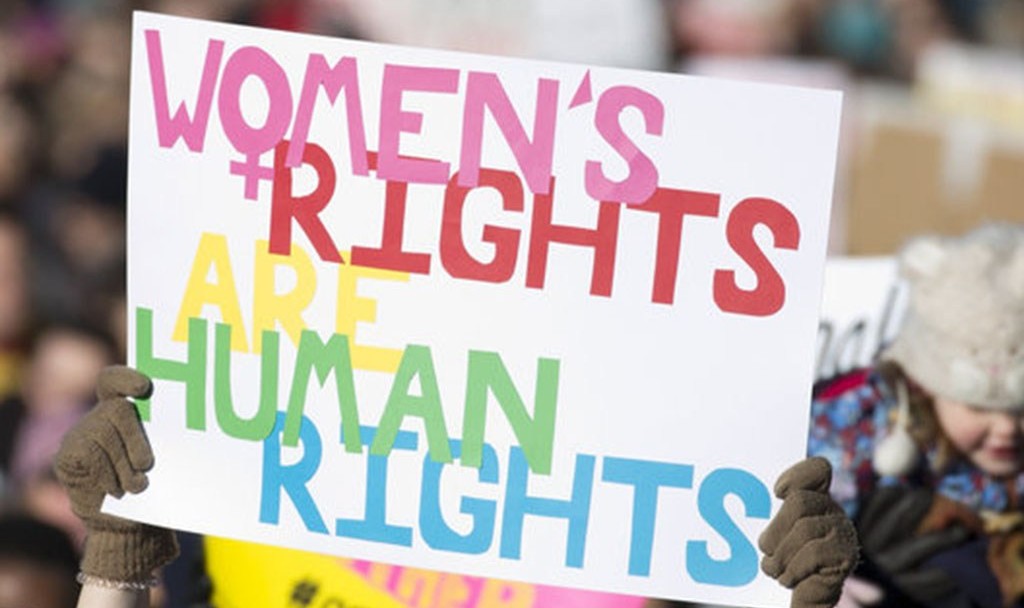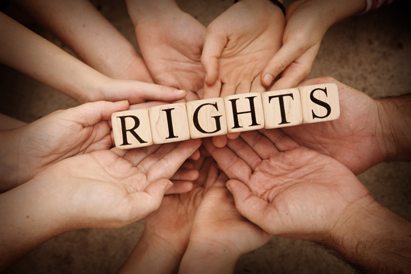Women’s Rights as Human Rights: A Global Perspective

Women’s rights are an essential aspect of human rights, reflecting the fundamental belief that all individuals, regardless of gender, should enjoy equal rights and opportunities. Despite significant advancements in gender equality over the past century, women around the world continue to face discrimination, violence, and systemic barriers that hinder their full participation in society. This blog explores the historical context, current challenges, and ongoing efforts to promote women's rights as a central tenet of human rights. Historically, women have been marginalized and denied basic rights across cultures and societies. In many parts of the world, women were viewed primarily as caregivers and homemakers, with little regard for their personal autonomy or aspirations. The suffragette movement in the late 19th and early 20th centuries marked a turning point in the fight for women's rights, as women began to demand the right to vote and participate in political processes. This movement laid the foundation for future advocacy efforts and highlighted the importance of women's voices in shaping laws and policies. Despite these advancements, women continue to face numerous challenges globally. Gender-based violence remains a pervasive issue, with millions of women experiencing physical, sexual, or emotional abuse in their lifetime. Socioeconomic inequalities, such as the gender pay gap and lack of access to education and healthcare, further exacerbate the situation. Additionally, cultural norms and practices in some societies perpetuate discrimination against women, restricting their freedom and opportunities. In recent years, there has been a growing recognition of women's rights as human rights on the international stage. The United Nations has played a crucial role in promoting gender equality through various initiatives, including the Convention on the Elimination of All Forms of Discrimination Against Women (CEDAW). This landmark treaty, adopted in 1979, outlines the rights of women and calls for the elimination of discrimination in all areas of life. Countries that ratify CEDAW commit to taking measures to ensure that women enjoy the same rights as men in political, social, economic, and cultural spheres. Grassroots movements have also been instrumental in advancing women's rights globally. Organizations such as #MeToo and Time's Up have empowered women to speak out against sexual harassment and violence, fostering a sense of solidarity and accountability. These movements have sparked conversations about consent, workplace equality, and the need for systemic change to protect women's rights. However, despite these efforts, challenges persist. The COVID-19 pandemic has disproportionately affected women, exacerbating existing inequalities in employment, education, and healthcare. Reports of domestic violence have surged during lockdowns, highlighting the urgent need for comprehensive support systems for survivors. As nations strive for recovery, prioritizing women's rights and gender equality in policies and programs will be essential for building resilient societies. In conclusion, women's rights are integral to the broader human rights discourse. Achieving gender equality requires collective action, sustained advocacy, and a commitment to dismantling systemic barriers. By recognizing and promoting women’s rights as human rights, we can create a more just and equitable world for everyone.
Date: january-2023
Written by: International Law Community
Read more articles and blogs below

Ethiopian Constitution and International Agreements: A Brief Analysis
It is worth examining the relations of the Constitution and international agreements adopted by Ethiopia to avoid confusion during interpretation and enforcement. The Constitution is the supreme law of the land, as stated in article 9(1) of the Constitution. This provision also states ‘Any law, customary practice or a decision of an organ of State or a public official which contravenes this Constitution shall be of no effect.’ Hierarchically, proclamations come next to the Constitution and are considered as implementing laws of the latter. They are enacted by the House of People Representatives (Parliament) when a specific law is needed to implement a general provision of the Constitution. The hierarchy of international agreements is also next to the Constitution and equal to the proclamations as both of them are ratified by the same organ: the House of People Representatives. International agreements are given constitutional recognition as part of the country’s laws. The Constitution provides in article 9(4) that ‘All international agreements ratified by Ethiopia are an integral part of the law of the land.’ One may ask who prevails when a conflict arises between the Constitution and international agreements. According to article 9(1) of the Constitution, it seems the Constitution prevails over international agreements as the provision stipulates that the Constitution is the supreme law of the land and any law which contravenes it shall be of no effect. That means any other laws, including international agreements, are subordinate to the Constitution. This constitutional provision may force courts or executive bodies of Ethiopia to decide in favor of the Constitution if a conflict arises between it and a given international agreement. This situation may be changed if the issue of this conflict is handled at the international forums. This is because, at the international forums, the more accepted principle is that international law prevails over a constitutional law when overlapping and inconsistency occurs between them. Unlike the domestic ones, international courts or Tribunals may decide in favor of a given international agreement when conflict arises between it and the Ethiopian Constitution. Therefore, I argue the forum where the issue is entertained matters to decide who prevails from the Constitution and international agreements. Moreover, regulations and directives can be placed in the third and fourth places respectively. The former is enacted by the Council of Ministers to implement the proclamations, whereas different Ministries enact the latter. Overall, the proclamations, international agreements, regulations and directives are inferior to the Constitution and need to be consistent with the latter to have a legal effect in the country.
Dr Seid Demeke Mekonnen
August 4, 2022

Understanding Basic Human Rights in International Law
Human rights are fundamental entitlements that every individual possesses simply by being human. These rights are rooted in the principle of dignity and equality and are protected under various international laws. In this blog, we’ll explore what basic human rights are, how they are defined under international law, and their significance in shaping global justice and peace. Several international legal instruments serve as the foundation for human rights protections globally. The Universal Declaration of Human Rights (UDHR), adopted by the United Nations General Assembly in 1948, is a landmark document that sets out the basic rights and freedoms applicable to all people. While not legally binding, it has served as the foundation for many international and national laws. The International Covenant on Civil and Political Rights (ICCPR), adopted in 1966, emphasizes individual rights such as freedom of speech, the right to a fair trial, and freedom from torture and slavery, and is legally binding on countries that have ratified it. The International Covenant on Economic, Social, and Cultural Rights (ICESCR), also from 1966, focuses on rights related to work, education, health, and an adequate standard of living, promoting the well-being of all individuals. International law broadly divides human rights into two categories. The first category, civil and political rights, protects individuals from infringement by governments and other entities and includes rights such as the right to life, freedom from torture and slavery, freedom of speech and expression, the right to a fair trial, freedom of assembly and association, and the right to privacy. The second category, economic, social, and cultural rights, guarantees individuals' well-being and standard of living, covering areas such as the right to work and fair wages, the right to education, the right to healthcare, the right to housing and food, and the right to participate in cultural life. While many countries recognize these rights, enforcing them globally remains a challenge. Key institutions working to protect human rights include the United Nations Human Rights Council (UNHRC), which investigates human rights violations and promotes respect for these rights globally; the International Criminal Court (ICC), which prosecutes individuals for crimes such as genocide, war crimes, and crimes against humanity; and regional human rights courts, such as the European Court of Human Rights and the Inter-American Court of Human Rights, which address violations in their respective regions. In conclusion, human rights are universal, indivisible, and fundamental to human dignity. International laws, treaties, and conventions have laid the foundation for protecting these rights, but ongoing efforts are needed to ensure that they are upheld for all. As individuals, governments, and international communities, it is our responsibility to defend and promote human rights globally. Let’s continue to raise awareness and advocate for the protection of human rights everywhere. Whether through supporting organizations, educating ourselves, or speaking out against injustices, every effort counts.
International Law Community
january-2023

Women’s Rights as Human Rights: A Global Perspective
Women’s rights are an essential aspect of human rights, reflecting the fundamental belief that all individuals, regardless of gender, should enjoy equal rights and opportunities. Despite significant advancements in gender equality over the past century, women around the world continue to face discrimination, violence, and systemic barriers that hinder their full participation in society. This blog explores the historical context, current challenges, and ongoing efforts to promote women's rights as a central tenet of human rights. Historically, women have been marginalized and denied basic rights across cultures and societies. In many parts of the world, women were viewed primarily as caregivers and homemakers, with little regard for their personal autonomy or aspirations. The suffragette movement in the late 19th and early 20th centuries marked a turning point in the fight for women's rights, as women began to demand the right to vote and participate in political processes. This movement laid the foundation for future advocacy efforts and highlighted the importance of women's voices in shaping laws and policies. Despite these advancements, women continue to face numerous challenges globally. Gender-based violence remains a pervasive issue, with millions of women experiencing physical, sexual, or emotional abuse in their lifetime. Socioeconomic inequalities, such as the gender pay gap and lack of access to education and healthcare, further exacerbate the situation. Additionally, cultural norms and practices in some societies perpetuate discrimination against women, restricting their freedom and opportunities. In recent years, there has been a growing recognition of women's rights as human rights on the international stage. The United Nations has played a crucial role in promoting gender equality through various initiatives, including the Convention on the Elimination of All Forms of Discrimination Against Women (CEDAW). This landmark treaty, adopted in 1979, outlines the rights of women and calls for the elimination of discrimination in all areas of life. Countries that ratify CEDAW commit to taking measures to ensure that women enjoy the same rights as men in political, social, economic, and cultural spheres. Grassroots movements have also been instrumental in advancing women's rights globally. Organizations such as #MeToo and Time's Up have empowered women to speak out against sexual harassment and violence, fostering a sense of solidarity and accountability. These movements have sparked conversations about consent, workplace equality, and the need for systemic change to protect women's rights. However, despite these efforts, challenges persist. The COVID-19 pandemic has disproportionately affected women, exacerbating existing inequalities in employment, education, and healthcare. Reports of domestic violence have surged during lockdowns, highlighting the urgent need for comprehensive support systems for survivors. As nations strive for recovery, prioritizing women's rights and gender equality in policies and programs will be essential for building resilient societies. In conclusion, women's rights are integral to the broader human rights discourse. Achieving gender equality requires collective action, sustained advocacy, and a commitment to dismantling systemic barriers. By recognizing and promoting women’s rights as human rights, we can create a more just and equitable world for everyone.
International Law Community
january-2023